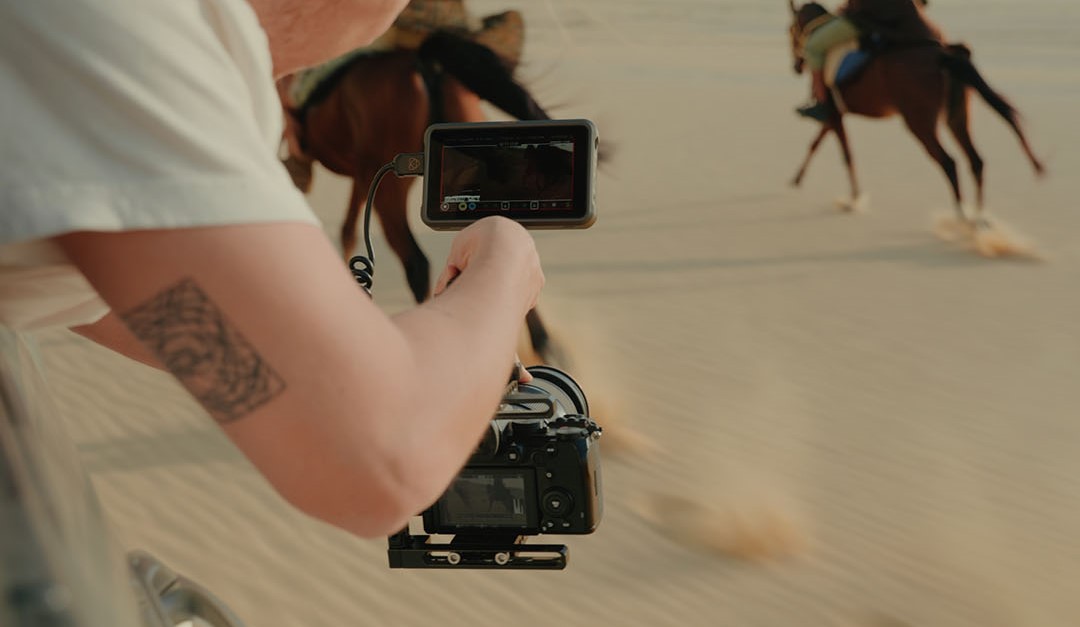Best videography camera techniques for beginners

When you’re just starting out in videography, it’s easy to end up with very static shots and footage lacking in dynamism. There is so much to consider – your settings, your focal length, your codecs, directing the scene, following the action, monitoring the sound and exposure levels – that actually capturing a creative shot often gets forgotten.
So how do you start injecting some life into your shot? Where do you begin, when it comes to making your video come to life rather than just recording what happens?
Our advice is to start simple – don’t try to shoot a chaotic action scene to rival a Marvel movie! Instead of complex, kinetic camera moves, there are some straightforward techniques that will improve your visual narrative, add drama and dynamism, and enable you to create effective shots more efficiently.
Cameras such as the Panasonic S5 put a lot of raw video power at your fingertips, but it's not just about the hardware – the actual technique is every bit as important. Here are some ideas to get you started…
Aerial shot

Once upon a time, aerial shots were incredibly hard to achieve. Hollywood historically employed everything from cranes to helicopters to get these overhead shots, but in recent years drones have democratized this area of videography.
Whether you use a dedicated camera drone, or you mount a lightweight camera like the Panasonic S5 to a regular drone, you can add instant production value and scale to your video by capturing shots from the sky.
Of course, you can achieve regular overhead shots without using a drone. If you’re working at a split level location, you may be able to shoot down from the floor above. Otherwise you can try a painter’s ladder to get extra height, or even mount your camera on a boom (or even a light stand) and hold it aloft – using the articulating rear screen so you can still frame accurately.
Shoot handheld
Many videographers and content creators inherently shoot handheld. However, just as in Hollywood where a shot that’s “handheld” often means “shot without a Steadicam rig”, shooting handheld can mean shooting without any of the equipment that compensates for camera shake – including the brilliant in-body image stabilization (IBIS) on cameras like the Panasonic S5.
Blockbuster films like the Jason Bourne franchise have made this a signature style of their action shots, using a “shaky cam” style to convey erratic combat, improvised movement, and danger spilling out of control. So, try removing the gimbal and turning off the IBIS if you want to capture a grittier tone, whether it’s documentary style footage, a chase scene, or even to signify amateur-looking footage!
Panning shot

This is one of the simplest ways to add movement to your scene. In essence, it replicates the situation where you’re standing somewhere on the street, and an ice cream van drives past; a turn your head to look, and it follows the ice cream van as it passes to see where it’s going.
To achieve this in video, set your camera up on a tripod – ideally with a pan head, which enables a smooth, lateral panning motion around the vertical axis – and pivot horizontally left or right to follow your subject. The sister shot to this, a tilting shot, works the same way but pivots up and down via the horizontal axis (and benefits from a tilt head on your tripod).
Rack focus
This is one of the most easy yet effective techniques available. Best employed with a static scene or subjects, you simply shift (or “rack”) the focus from a foreground object / subject to a background object / subject. This establishes a scene or environment, and provides an in-camera transition to a relevant person or point of interest.
You might, for example, be shooting a wedding, with the wedding couple sat at the head table. You could start your shot focused on wine glasses on a table in the foreground, and then shift the focus (either by tapping the touchscreen or, ideally, by manually focusing your lens) to the happy couple.
Dutch tilt

Also known as Dutch angle, oblique angle or canted tilt, this is a shot where the camera is rotated on its roll axis, creating a camera angle that’s tilted – whereby the horizon is not level, but akin to the viewpoint if you tilt your head to one side. (It doesn’t actually originate from Holland, though; it was popularized by German expressionist filmmaking.)
If you’ve ever seen an episode of the Sixties Batman TV series, films like Alfred Hitchcock’s Suspicion, or video games like Resident Evil, you will see that this technique is used to convey either tension and unease or an off-kilter psychedelic effect – though it’s mainly regarded as a dramatic effect.

Get the Digital Camera World Newsletter
The best camera deals, reviews, product advice, and unmissable photography news, direct to your inbox!
Digital Camera World is one of the leading authorities on camera and photography news, reviews, techniques, tutorials, comparisons, deals and industry analysis. The site doesn't just specialize in cameras, but all aspects of photography, videography and imaging – including camera phones, gimbals, lenses, lighting, editing software, filters, tripods, laptops, printers, photo books, desks, binoculars and more.
Whether you're using, looking to buy or trying to get the most out of a compact camera, action camera, camera drone, cinema camera, beginner camera or professional camera, Digital Camera World has a roster of experts with combined experience of over 100 years when it comes to cameras, photography and imaging.

